How I found a supermassive black hole
One of the most massive black holes ever discovered? Yes, that's
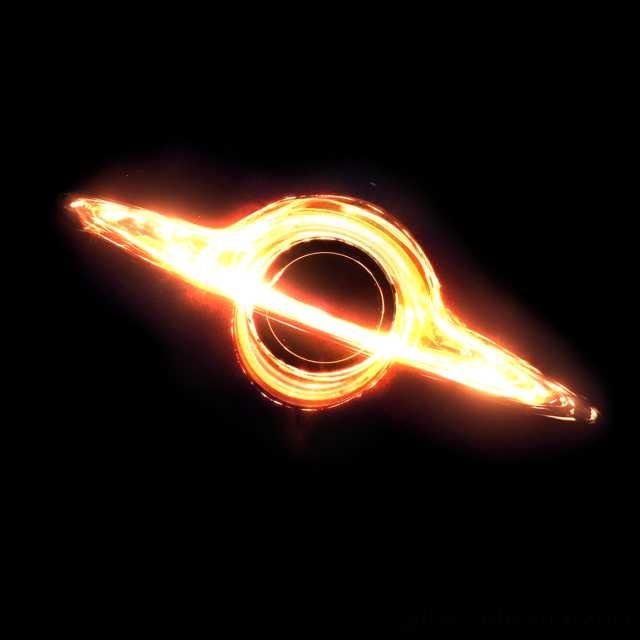
This behemoth is approximately 60 billion times the mass of our Sun. Yep, that's not a typo—60 billion solar masses!
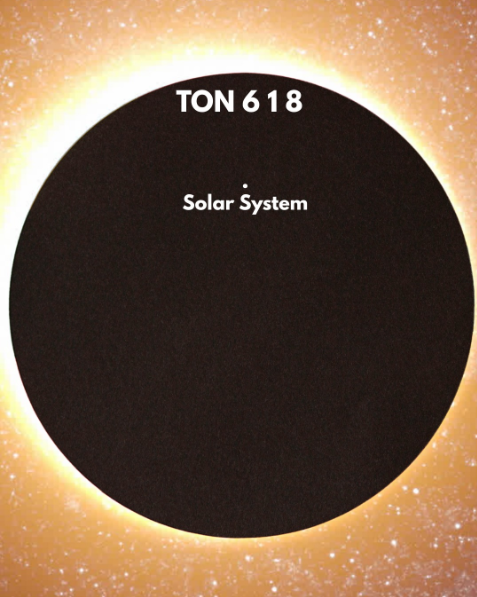
Even though this object is an incredible 10.4 billion light-years away (that's just 3.4 billion years after the Big Bang!), I managed to capture it using my humble Seestar S50 smart telescope. 🔭
That makes TON618 one of the most distant objects I've ever been able to photograph with this small aperture.
This post is a quick Puchi (プチ) story about how I took a photo of this incredible object, which isn't even in the database of my Seestar S50 smart telescope. Let's dive into how I did it! ⭐
===== =====
> First things first: to locate this object, I needed to find something nearby that was registered in my telescope's database.
So, I fired up the Stellarium software on my PC and checked TON618’s coordinates on Wikipedia:
Right ascension: 12h 28m 24.9s
Declination: +31° 28′ 38″
With the coordinates in hand, I was ready to hunt down this cosmic giant.
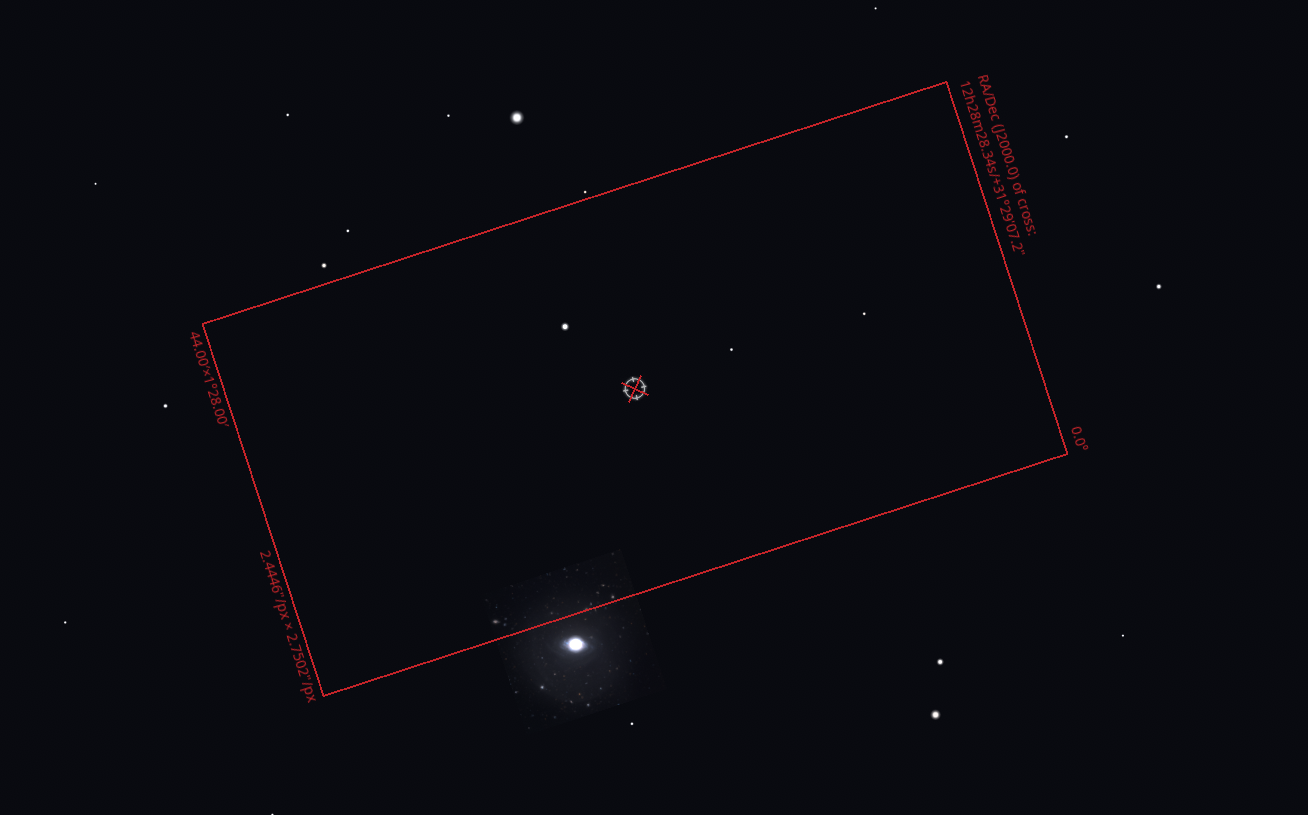
I set-up actuall view of Seestar's camera as parameters to the Stellarium, to approximately know how much of the space around I'm able to capture. And the red frame in picture above shows how it looked like.
After that I found most bright object near by, that has a name which is also registred in the database of Seestar: NGC4414
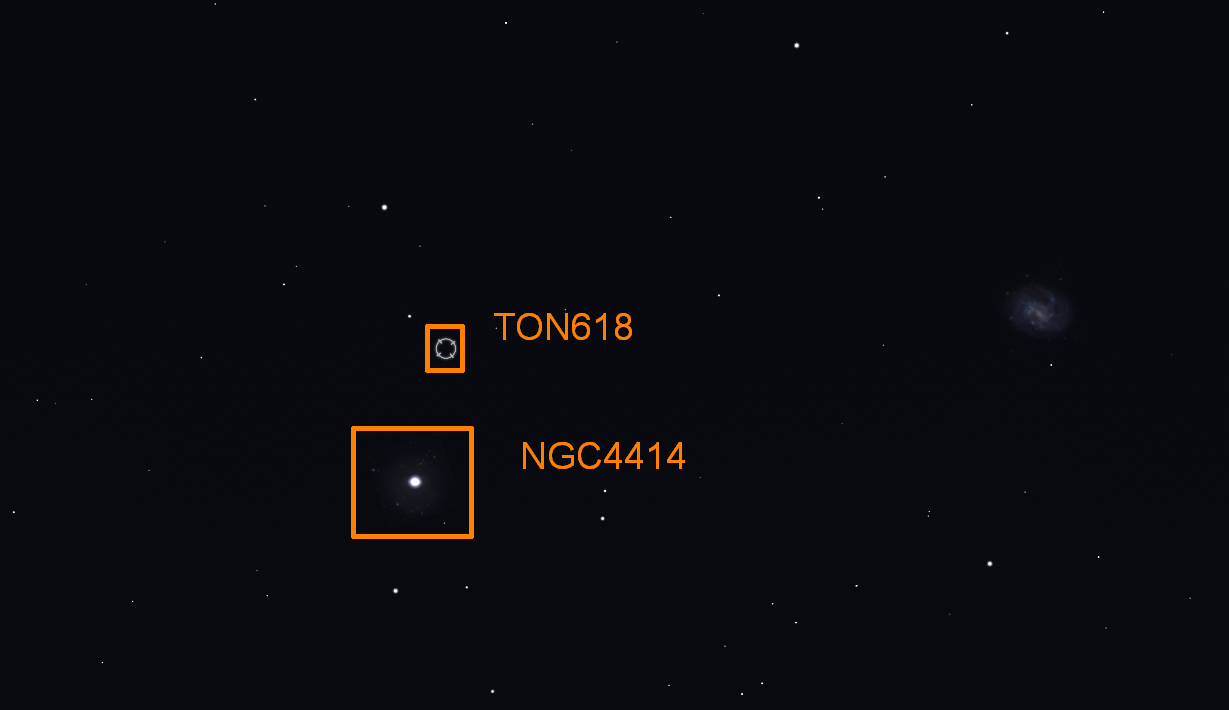
When I had NGC4414 next step was to insert the name into a search column in Seestar's mobile app.
So I compared screenshot from Stellarium with star-map in the app,
set up frame to the right possition and after some fine-tuning and careful alignment,
I managed to lock onto TON618.
After few minutes I started to see a picture 👀
And this is how it looks like after I zoomed-in a little bit.
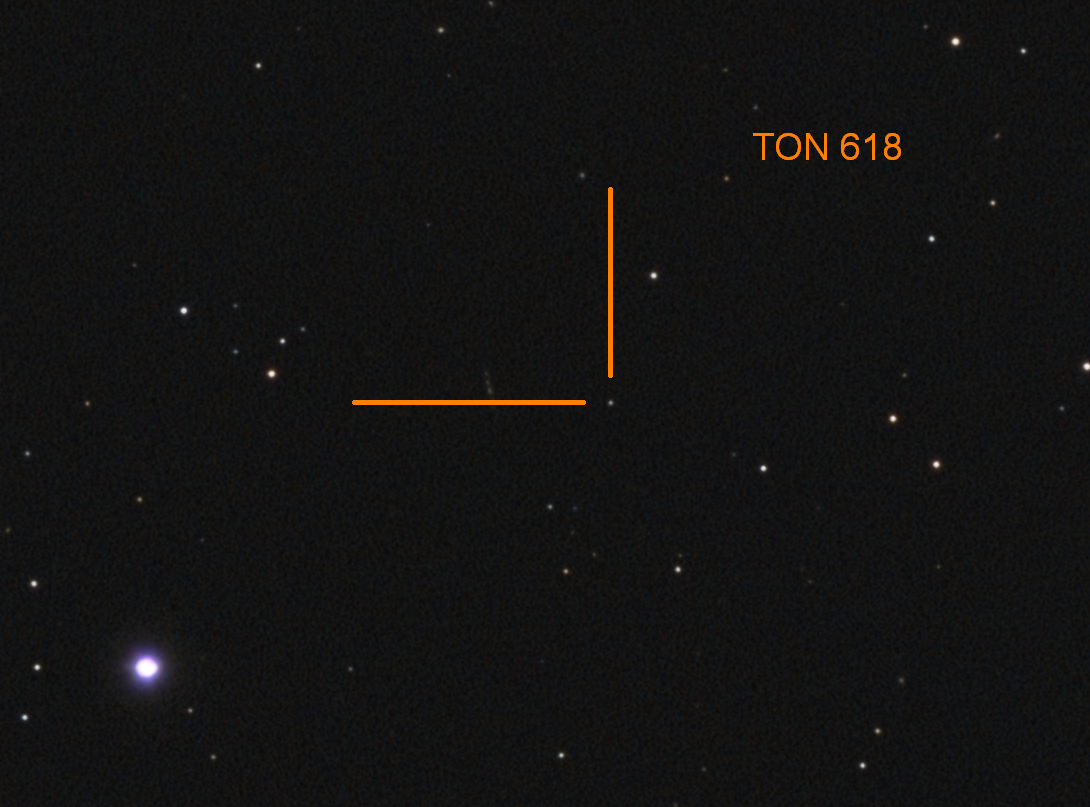
Not very impressive, huh? But When you think about the distance and the specs of my modest telescope (which cost just around 600 bucks), it's mind-blowing that I was able to peer so far back into cosmic history. Those photons of light took 10.4 billion years to reach our Blue Planet—long before Earth even existed!
Seeing those ancient photons made me fall in love with astrophotography and astronomy all over again.
There's something incredibly humbling about capturing a piece of the Universe's history, light that predates our planet itself. Something that let us see unseen in history of space-time long before even the Solar system existed...
As you can see from the article, Seestar is not just a tool to photograph near by nebulae, but also a cheap scientific instrument to study the Cosmos and also a way-back machine in fabrics of space-time 🌌
You can see the whole picture here